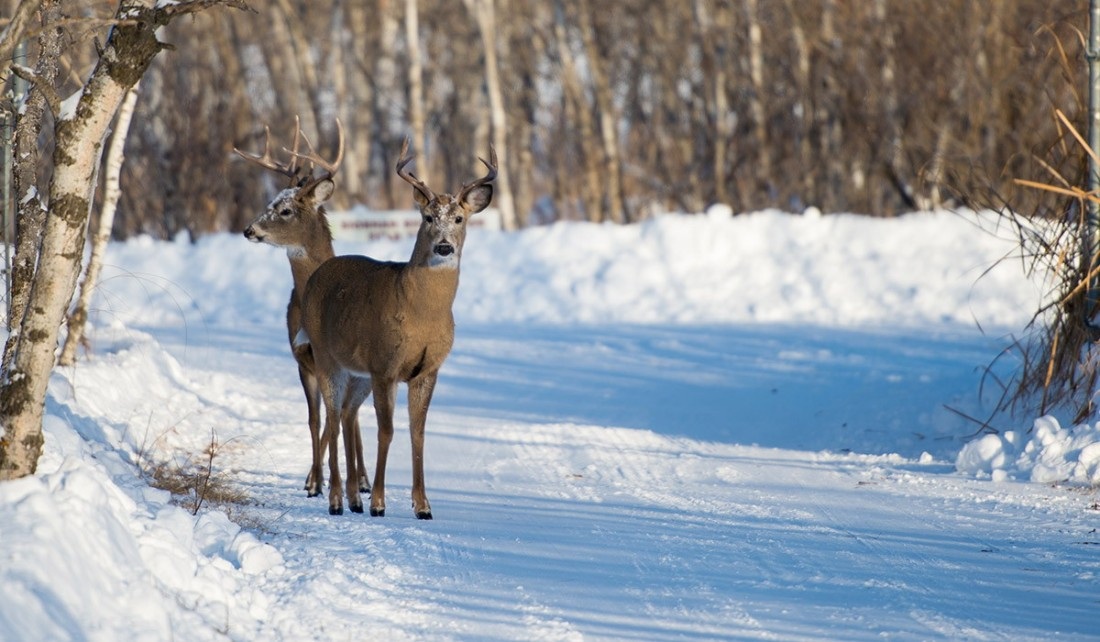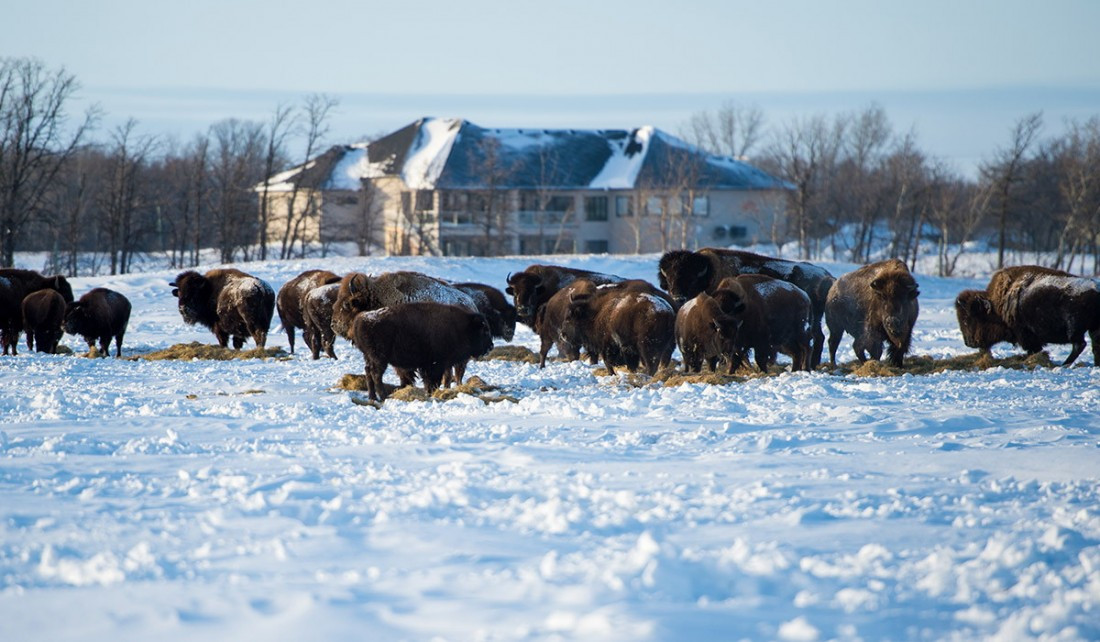Hibernating 101
Fort Whyte’s Barret Miller tells how animals handle the freezing cold
Despite human technological advances and our supremacy on the food chain, humans still don’t know how to handle -40 degree weather quite like Manitoban animals do.
At Winnipeg’s wildlife hotspot, the Fort Whyte Centre, Barret Miller, Special Programs Interpreter says there are many animals still visible in winter that don’t hibernate or migrate. “White tail deer and coyotes are the biggest of the mammals that we have and they are both very active this time of year,” Miller says. “They don’t take a break at all.”
In fact, many animals are quite active and visible during winter. Fort Whyte’s resident Great Horned Owls have their courting season in the middle of February. These owls mate for life, and during courting season go through a ritual of hooting across the woods to each other until they eventually end up sitting together in their nest.
Another animal that has been spotted by Miller recently is a Pine Marten, a type of large weasel. Miller says this type of sighting is rare. Marten’s live in trees, and are usually very secretive. There’s no surprise as to why “weasel” is a nickname for a sneaky person once you learn how the Marten gets through the winter. “It too will be sleeping away the worst parts but it also sometimes takes advantage of the cold to catch the squirrels while they are sleeping,” Miller explains.
All reptiles and snakes are currently in hibernation, but some animals opt for a shorter sleep called Torpor, AKA “super-napping”. “It’s like a mini hibernation,” Miller says of the process, in which the animal’s body shuts down in the worst parts of the season to conserve energy. Comparably, the human version of this might be a tropical vacation getaway for a week.
Fort Whyte has a marathon every February called the Hypothermic Half, an outdoor 13.1 mile feat for the brave. Runners can learn from the wildlife how to stay warm. “Last year we had a session on how animals keep warm,” Miller says. For instance, some mammals have lots of baffles around their nostrils. “What can people learn from that? Well maybe you need a little extra scarf or mask to breathe through when you’re running to protect your nice warm lungs from the harsh cold air.”
Another technique that animals use is layers. “Most of the animals have layered coats,” Miller states. “They can’t take off a layer but they can use muscles in their skin to puff up or lay that fur down.”
If you want to check out the wildlife but don’t want to run a half marathon, there are lots of other activities going on at Fort Whyte this winter including snowshoeing, winter camps, and a free ice fishing weekend January 25 & 26 (no fishing license required). Just have a super-nap, put on a scarf, layer up and you’re good to go.
Published in Volume 68, Number 15 of The Uniter (January 8, 2014)









